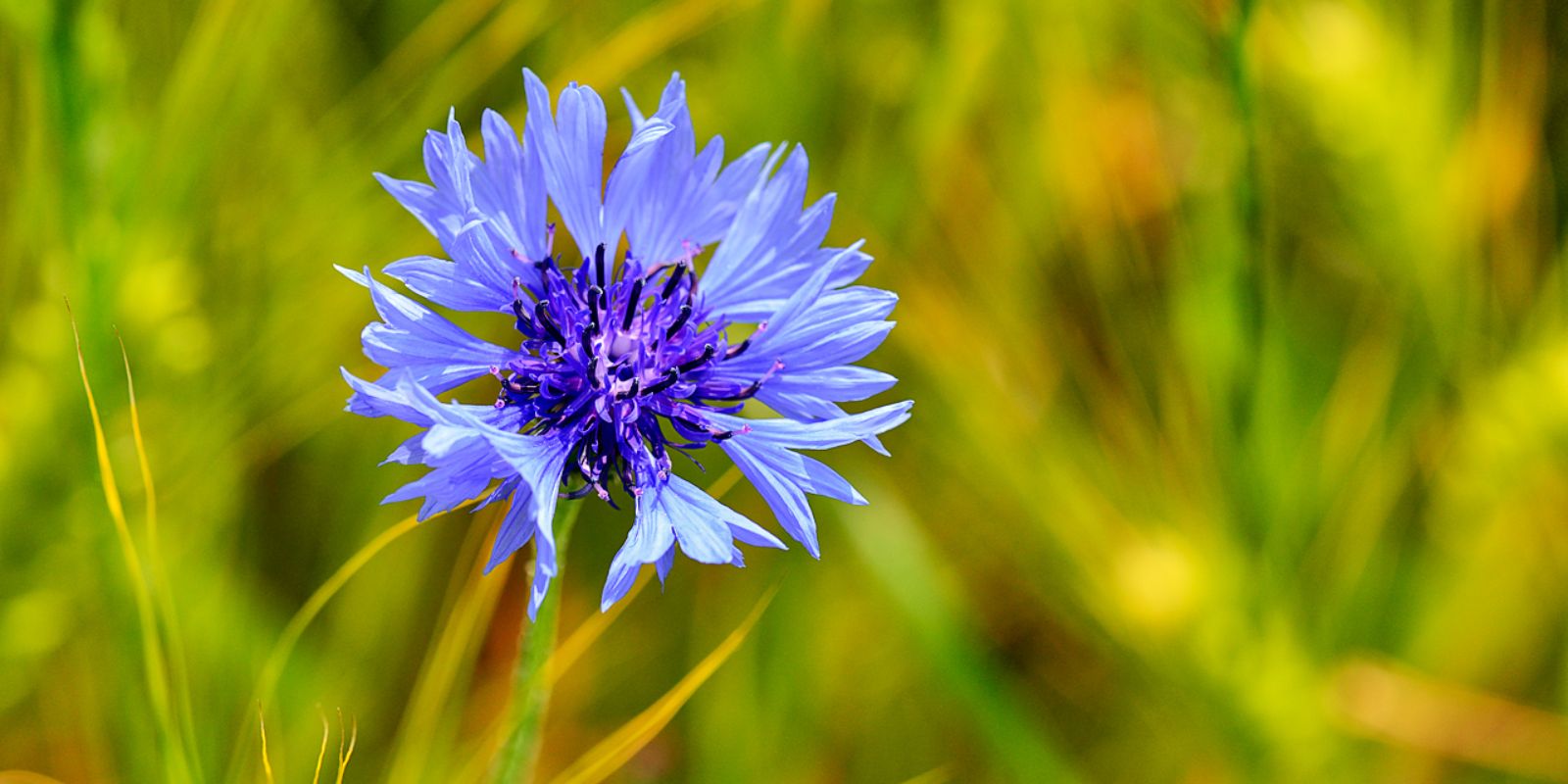The Blue Cornflower, or Centaurea cyanus, is an elegant and eye-catching flower that can elevate any garden with its vivid blue hues and charming presence. Also known as bachelor’s buttons, these blooms have long been admired for their beauty and simplicity. In this article, we will explore how to successfully grow and maintain a field of Blue Cornflowers, from preparation to ongoing care.
Introduction to Blue Cornflowers
The Blue Cornflower, native to Europe and Asia, is celebrated for its striking blue petals and delicate, lacy foliage. Historically, it was used as a symbol of love and remembrance, making it not only a beautiful but also a meaningful addition to any garden. These flowers are relatively easy to grow and are well-suited for a variety of garden settings, from cottage gardens to formal landscapes.
1. Selecting the Perfect Location
Choosing the right location is crucial for a thriving Blue Cornflower field.
- Sunlight Requirements: Blue Cornflowers thrive in full sun but can tolerate partial shade. Ensure the chosen spot receives at least 6 hours of sunlight daily.
- Soil Type: Opt for well-drained soil. These flowers prefer a slightly acidic to neutral pH, typically between 6.0 and 7.0. If your soil is heavy clay, consider amending it with compost or sand to improve drainage.
Tip: Conduct a soil test to check pH and nutrient levels. Adjust as necessary to provide the best growing conditions for your Blue Cornflowers.
2. Preparing the Soil
Proper soil preparation is essential for healthy plant growth.
- Clear the Area: Remove any weeds, rocks, or debris from the planting area. Weeds can compete with your cornflowers for nutrients and water.
- Amend the Soil: Incorporate organic matter such as compost or well-rotted manure into the soil. This enhances soil fertility and improves its structure, aiding in better root development.
- Soil Tilling: Loosen the soil to a depth of about 12 inches. This promotes good root growth and allows for better water infiltration.
Tip: Blue Cornflowers are tolerant of poor soil conditions but will benefit from enriched soil, which can lead to more vigorous growth and better flowering.
3. Sowing Seeds
Sowing seeds is a straightforward process, but timing and technique are important for success.
- Timing: Directly sow Blue Cornflower seeds in the garden after the last frost date. These flowers are hardy and can withstand cooler temperatures, making them ideal for early spring planting.
- Sowing Method: Scatter the seeds evenly over the prepared soil and lightly press them in. Avoid covering the seeds with too much soil, as they need light to germinate.
- Spacing: Allow about 6 to 12 inches between each seed to give the plants room to grow. This spacing ensures good air circulation and reduces the risk of disease.
Tip: For a more controlled planting, start seeds indoors 6 to 8 weeks before the last frost and transplant them outdoors once the seedlings are robust enough.
4. Watering and Fertilizing
Watering and fertilizing are key to maintaining a healthy Blue Cornflower field.
- Watering: Keep the soil consistently moist until the seeds germinate, which usually takes 7 to 14 days. Once established, Blue Cornflowers are relatively drought-tolerant and require less frequent watering. Avoid waterlogging, as this can lead to root rot.
- Fertilizing: Blue Cornflowers generally do not need heavy fertilization. Apply a balanced, all-purpose fertilizer once in early spring if desired. Over-fertilizing can lead to excessive foliage growth at the expense of blooms.
Tip: Water the plants at the base to avoid wetting the foliage, which can help prevent fungal diseases.
5. Maintenance and Care
Proper maintenance ensures your Blue Cornflowers remain vibrant and healthy throughout the growing season.
- Deadheading: Remove spent blooms regularly to encourage continuous flowering. Deadheading prevents the plant from setting seed and redirects energy into producing more flowers.
- Pest and Disease Control: Blue Cornflowers are relatively resistant to pests and diseases. However, keep an eye out for aphids or powdery mildew. Treat any issues promptly with appropriate organic remedies.
- Support: In areas with strong winds or heavy rain, consider staking the plants or using a garden support to prevent them from falling over.
Tip: Regularly check the plants for signs of disease or pest infestations. Early intervention can help prevent more serious problems.
6. Seasonal Care and Harvesting
Seasonal care and proper harvesting techniques can extend the beauty and usefulness of your Blue Cornflowers.
- Fall Care: In autumn, after the blooming period has ended, cut back the plants and remove any debris from the garden. This helps prevent overwintering pests and diseases.
- Seed Collection: If you wish to collect seeds for future planting, wait until the flower heads are dry and brittle. Harvest the seeds and store them in a cool, dry place.
Tip: Blue Cornflowers are excellent for cut flower arrangements. Harvest the blooms in the morning when they are fully open for the longest vase life.
7. Benefits and Uses
In addition to their beauty, Blue Cornflowers offer several practical benefits.
- Wildlife Attraction: These flowers attract beneficial insects such as bees and butterflies, making them an excellent choice for pollinator-friendly gardens.
- Edible Blooms: The petals of Blue Cornflowers are edible and can be used to garnish salads or desserts, adding a touch of color and flavor.
Motivational Note: Embrace the vibrant beauty and practical benefits of Blue Cornflowers in your garden. With minimal effort, you can create a stunning display that will delight both you and your visitors throughout the growing season.
Conclusion
Creating a field of Blue Cornflowers (Centaurea cyanus) is a rewarding gardening project that brings vibrant color and charm to your outdoor space. By following these steps—from soil preparation to ongoing care—you can ensure a successful and beautiful display of these delightful blooms. Enjoy the process of growing and maintaining your Blue Cornflower field, and revel in the joy and satisfaction it brings to your garden. 🌸💙

